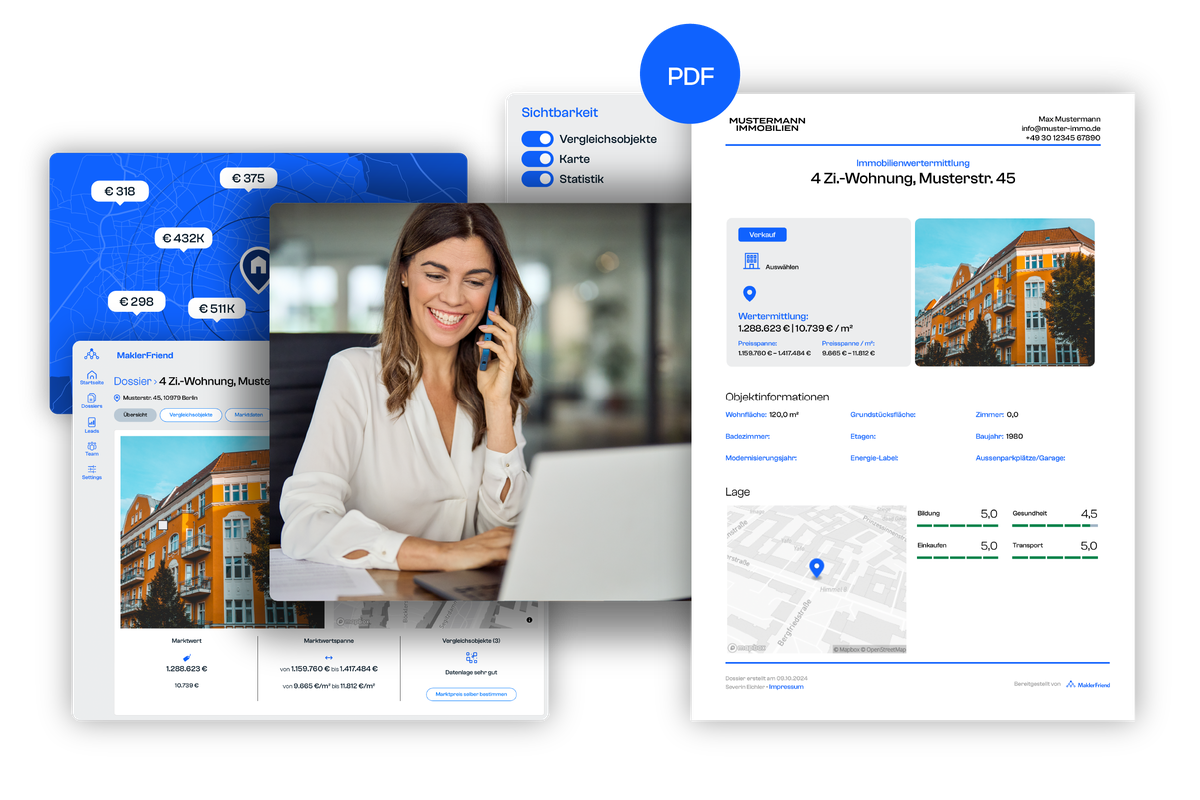Building MaklerFriend – A Real Estate Valuation Platform Powered by Big Data & Machine Learning
Over the last year, I’ve been developing MaklerFriend. A real estate valuation platform that leverages millions of data points to provide fast, data-driven property evaluations.
Unlike traditional CRMs or agent tools, MaklerFriend focuses on one core mission: accurately estimating the value of residential properties using modern data science techniques. In the world of real estate, this is a game-changer. Instead of relying solely on gut feeling or outdated comparison tools, agents can now access powerful analytics at the click of a button.
What MaklerFriend Does
MaklerFriend automatically collects, processes, and analyzes real estate data from a wide range of sources. The platform delivers:
- Data-driven property valuations
- Market trends and neighborhood insights
- Comparative price analysis
- Interactive reports for agents and clients
At its core, the system combines web scraping, machine learning, and big data processing to deliver fast and reliable results. It’s designed to be user-friendly while hiding the technical complexity under the hood.
To keep the system scalable, I built custom data pipelines that continuously scrape and normalize real estate listings across Germany. These pipelines feed into a machine learning model trained on historical property data to predict realistic market values.
Challenges I Faced
- Data quality and volume
One of the biggest challenges was handling unstructured, messy data from multiple sources. Real estate listings are inconsistent, incomplete, and often noisy. I had to build a robust ETL pipeline to clean, merge, and validate millions of data points.
2. Model performance and interpretability
It wasn’t just about accuracy. The results had to be explainable to end users. I integrated tools to visualize prediction factors and confidence intervals, so agents can understand and trust the output.
3. Working alone in the beginning
As a solo developer, I handled every part of the stack. From scraping infrastructure to frontend components, ML experimentation to deployment. This meant juggling very different types of work, often switching between deep tech and user experience design.
4. Aligning with a business partner:
I collaborated with a business partner who funded parts of the project. One of the toughest aspects wasn’t code-related, but communication-related – aligning on priorities, value, and expectations. Learning to represent the technical side in a business discussion was a skill I developed along the way.
What I Learned
- Scraping and big data require much more infrastructure than people think.
- Accuracy alone isn’t enough – explainability matters, especially in high-stakes decisions like property valuation.
- Building a product that’s useful to professionals means constantly validating assumptions with real users.
- Machine learning is not magic – the real value is in the data pipeline and problem framing.
The Road Ahead
MaklerFriend is currently in closed testing with a group of early adopters. The goal is to keep improving prediction quality, integrate more external data sources (e.g., demographics, zoning, infrastructure), and offer a powerful API for real estate professionals.
This project has been the most complex and rewarding one I’ve ever built. It combines everything I love: data, real-world problems, and software that actually makes a difference.
Thanks for reading!

